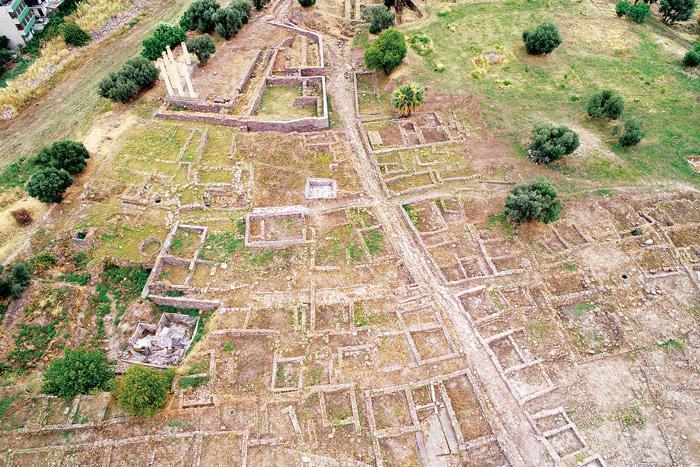
Ashes from the Santorini Volcano, the world’s biggest volcanic eruption in history, were found after 3,600 years in the ancient city of Smyrna in İzmir.
The ashes that were found 270 kilometers away from the Santorini Island and investigated by archaeologist will give clues about the history of the city.
The ancient city of Smyrna, where archaeologists found the traces of settlements from 5,000 years ago and which is regarded as the place where İzmir is founded, is one of the most important places for Aegean culture. Since 2007, many artifacts have been unearthed during excavations in Smyrna.
Speaking to state-run Anadolu Agency, Professor Cumhur Tanrıver said important data on the establishment of İzmir were found during the excavations.
“It is possible to see here how people built houses in the Greek city and how the city planning was. The earliest written works of the Aegean world were also found here. The Temple of Athens, considered the first big Greek temple in Anatolia, is here too,” said Tanrıver, adding that the first Greek house was found there.
The professor said the ancient city, which is also known as the old İzmir, was an important trade hub, and that they had unearthed the traces of products produced in a wide geography from Palestine in Smyrna.
“In this year’s drilling work, the ashes of the Santorini Volcano, which is also known as the Minoan eruption and the biggest volcano eruption over the last 10,000 years in history, were found. These ashes will shed new light on İzmir’s history,” he said. The drilling involved the participation of a team of nearly 100 people including Turkish and foreign universities’ academics, students and also workers.
Tanrıver said the ashes, which have undergone certain tests by the Aegean University Department of Geography academic Professor Ertuğ Öner and his team, are important in terms of İzmir’s history.
He pointed out that the Santorini explosion was shown as one of the greatest volcanic events in history that left a significant part of the Aegean basin, including the Minoan Civilization, under the sea.
“The Santorini Volcano exploded in the 1650s B.C. and its ashes spread throughout the whole Aegean region,” he added.
Following these ashes in the ancient cities is an important work, said Tanrıver.
“Here, with a more comprehensive study, we have already identified these ashes and now we are crosschecking their history. This work will provide the following for the archaeological community: We will know the history of this explosion,” he said.
“When these ashes are examined, they will show how this explosion, which affects the fate of the entire Mediterranean, has caused changes in Smyrna and how it affected people and culture. It will be like a touchstone to us. We will be able to sort out some events in Smyrna in chronological order,” said the professor.